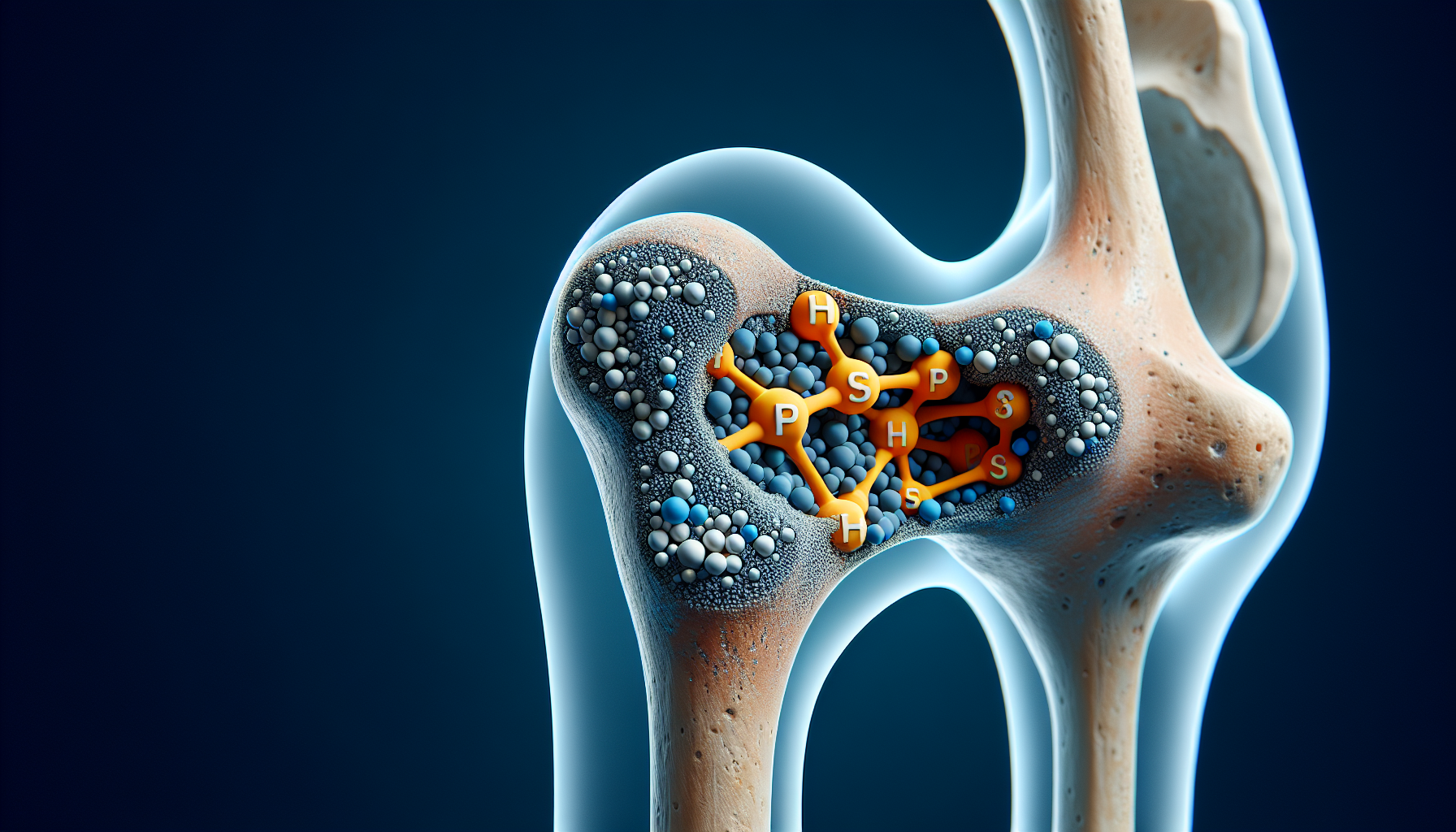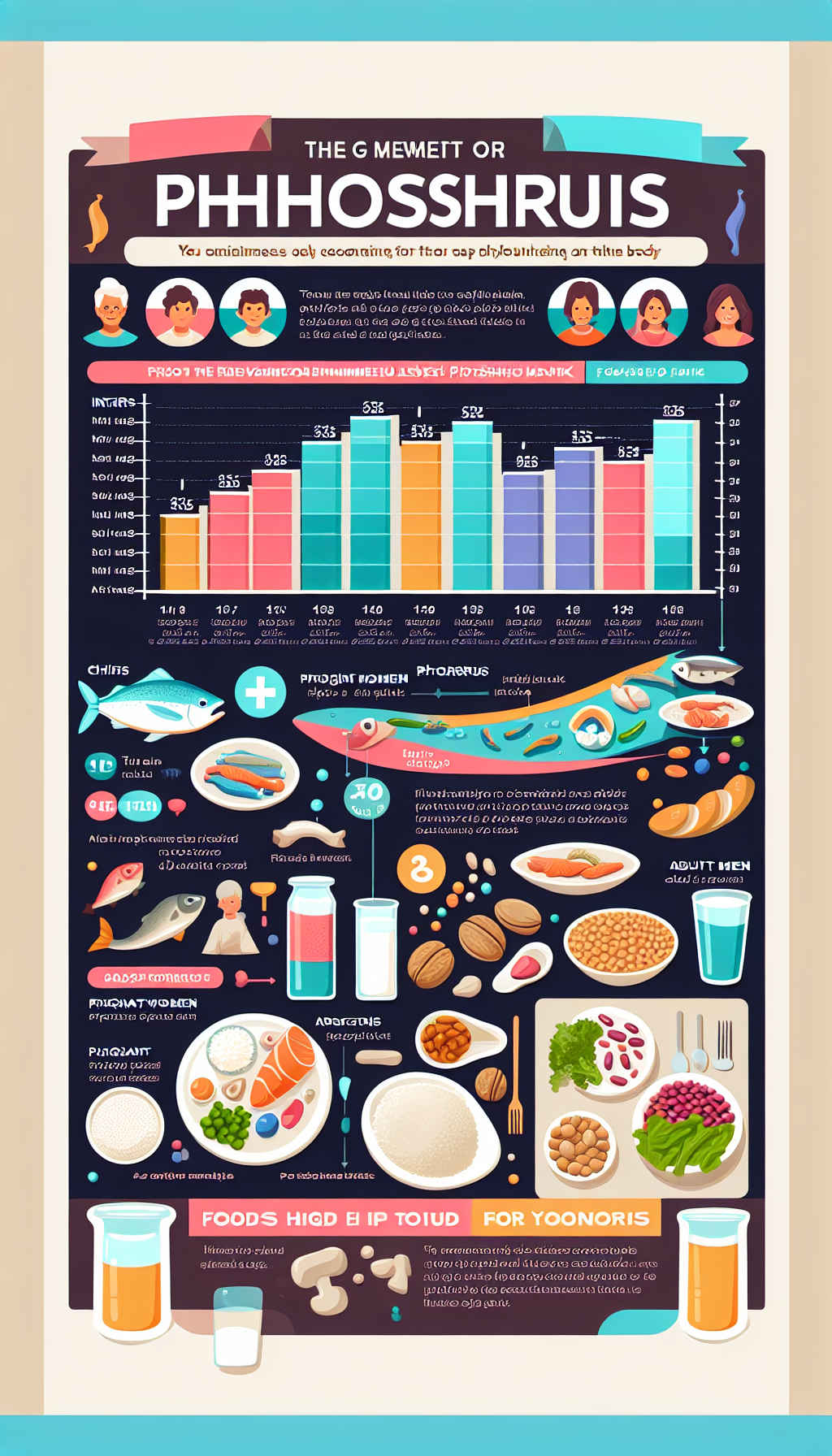Phosphorus is one of the most abundant minerals in the human body and plays a pivotal role in various biological processes, particularly in maintaining bone health. This article aims to unpack the significance of phosphorus in our skeletal system, its sources, how it works in harmony with other nutrients, and the implications of both deficiency and excess.
Understanding Phosphorus and Bone Composition
Bone is a living, dynamic tissue that is continuously being remodeled. Phosphorus, along with calcium, forms the primary mineral component of bones, known as hydroxyapatite. This lends bones their rigidity and strength. Phosphorus is also instrumental in the body’s energy storage and usage, DNA and RNA structure, and the regulation of the body’s acid-base balance.
Adequate phosphorus intake is crucial for bone health at all life stages. During childhood and adolescence, it supports growth and development, while in adulthood, it maintains bone structure and function.
Phosphorus Synergy with Calcium and Vitamin D
The relationship between phosphorus, calcium, and vitamin D is essential for proper bone mineralization. Vitamin D aids in the absorption of calcium and phosphorus from the diet. A balance between these nutrients is necessary; an excess or deficiency in one can adversely affect the others, leading to bone health issues. For more comprehensive information on this synergy, the article Optimizing Bone Health with Plant-Based Nutrients provides valuable insights.
Dietary Sources of Phosphorus
Phosphorus is found in a variety of foods, with the richest sources being protein-rich foods such as meats, poultry, fish, eggs, dairy products, nuts, and seeds. Whole grains, beans, and legumes also provide phosphorus, albeit with lower bioavailability due to the presence of phytic acid, which can bind phosphorus and prevent its absorption. For individuals following a plant-based diet, understanding the impact of this and how to optimize nutrient absorption is crucial, as further explained in the article on Bone Density and Nutritional Absorption: How They Interact.
Phosphorus Absorption and Metabolism
The body regulates phosphorus levels through absorption in the small intestine and reabsorption in the kidneys, with hormones such as parathyroid hormone (PTH) and fibroblast growth factor 23 (FGF23) modulating these processes. The kidneys are the primary route for excretion, adjusting the excretion rate depending on the body’s needs.
The Consequences of Phosphorus Imbalance
Both deficiency and excess of phosphorus can lead to health complications. Phosphorus deficiency, though rare, can result in bone pain, muscle weakness, and potentially rickets in children. On the other end of the spectrum, excess phosphorus, particularly in the presence of kidney disease, can lead to hyperphosphatemia, which may result in vascular calcification and cardiovascular issues.
Phosphorus and Kidney Health
Individuals with chronic kidney disease must monitor and manage phosphorus intake carefully, as their kidneys may not be able to excrete it effectively. This can exacerbate bone disorders such as osteomalacia and contribute to cardiovascular disease. The The Importance of Weight Management for Bone Health article provides further discussion on managing dietary factors for overall health.
Phosphorus and Aging
Aging can affect phosphorus metabolism, with older adults at risk of both phosphorus deficiency due to dietary insufficiency and phosphorus excess due to reduced renal function. The article on The Effects of Aging on Calcium Metabolism and Bone Health offers an in-depth look at how aging influences these processes.
Recommendations for Phosphorus Intake
The recommended dietary allowance (RDA) for phosphorus varies by age, sex, and life stage, with adults typically requiring about 700 mg per day. Balancing phosphorus with calcium intake is also essential, with the recommended calcium-to-phosphorus ratio being about 1:1 or 1:1.5.
Supplementation and Treatment
For those unable to meet their phosphorus needs through diet alone, supplementation may be necessary. However, it is important to consult a healthcare professional before starting any new supplement regimen.
External Resources for Further Research
- The National Osteoporosis Foundation provides resources on bone health, including the role of phosphorus in maintaining bone density (National Osteoporosis Foundation).
- The Linus Pauling Institute offers an in-depth Micronutrient Information Center, including a comprehensive overview of phosphorus (Linus Pauling Institute).
- Kidney Health Australia provides guidelines on managing phosphorus intake for those with kidney disease (Kidney Health Australia).
- The American Society for Bone and Mineral Research presents the latest research on bone health, which includes studies on phosphorus and bone metabolism (ASBMR).
In conclusion, phosphorus is a vital mineral that plays an integral role in maintaining bone health. Understanding its function, sources, and the balance required with other nutrients is essential for ensuring optimal bone density and overall well-being. Whether through dietary sources or careful supplementation, managing phosphorus intake is a key component of a holistic approach to bone health.



